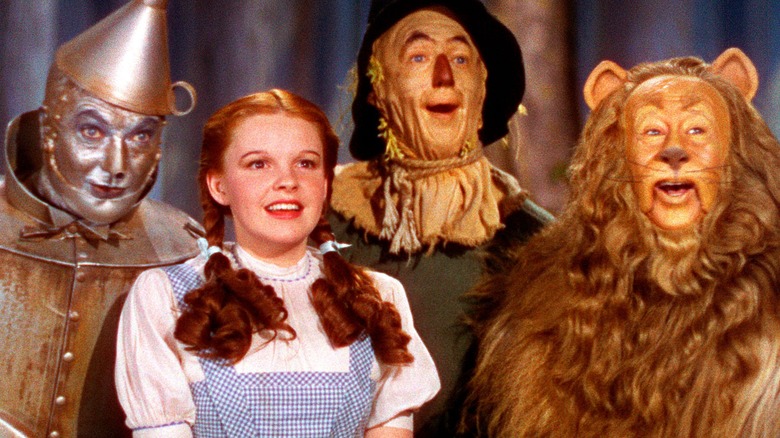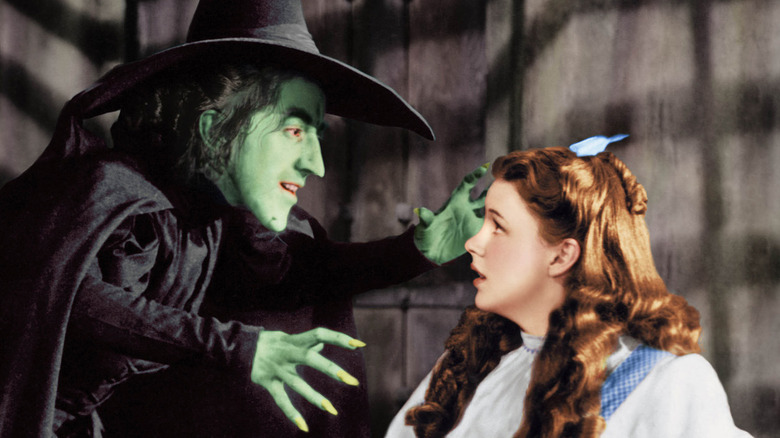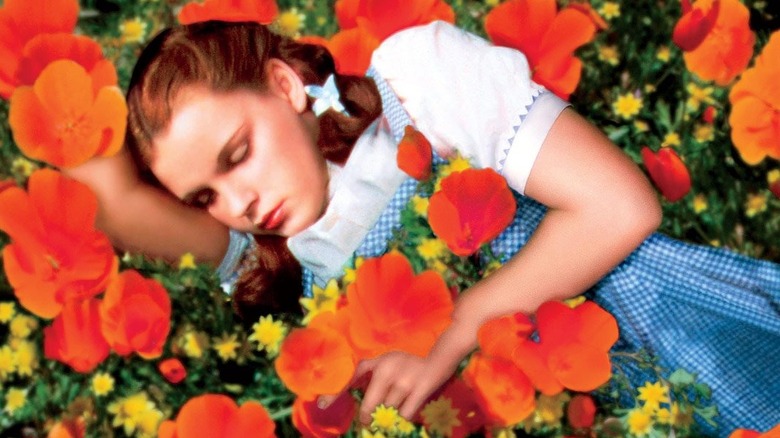
The 1939 film "The Wizard of Oz," quite possibly the most famous movie of all time, had a notoriously messy production.
While the film is based on the book by L. Frank Baum, first published in 1900, the 1939 film version has supplanted it in the popular consciousness with its memorable songs, indelible iconography (and employing the overused phrase "indelible iconography" is apt when talking about "The Wizard of Oz"), cutting-edge special effects, nightmarish images (those monkeys!), and characters that have entrenched themselves into the minds of every human being alive.
None of this came easy, however, and "The Wizard of Oz" was most certainly not an example of a single artistic creator or hardworking auteur bringing their unique voice to the screen. The production changed hands several times, starting with director Norman Taurog (whose "Skippy" and "Boys Town" were nominated for Best Picture), then moving to Richard Thorpe ("Ivanhoe," "The Prisoner of Zenda"), George Cukor ("Gaslight," "Little Women," many classics besides), before finding the film's credited director, Victor Fleming ("Gone with the Wind"). Even then, King Vidor ("The Big Parade," "Northwest Passage") was brought in to complete additional sequences.
In the modern era, where even basic reshoots can be pegged by Twitter pundits as evidence of a troubled production, the drama behind the scenes of "The Wizard of Oz" would make several people's heads melt like the Wicked Witch of the West.
Some Of The Dangers We Already Know About

Fans of "The Wizard of Oz" can likely rattle off a litany of on-set dangers experienced by the cast a crew of "The Wizard of Oz." Margaret Hamilton, who played the Wicked Witch of the West, infamously burned her face on a fire effect, and then as soon as she recovered was immediately asked to film another scene with a fire effect (her stunt double Betty Danko took her place instead, and Danko also caught on fire).
Ray Bolger's Scarecrow makeup chapped his face, often causing it to bleed and leaving small scars on his face. Actor Buddy Ebsen, the original actor set to play the Tin Woodman, was replaced by Jack Haley after Ebsen had a severe allergic reaction to the Tin makeup. Very severe: Ebsen's hand and arms cramped up and he had to be taken to the hospital. The makeup, it turned out, contained aluminum.
A recent article in Vanity Fair details additional horrors, and the recent feature film "Judy," a biopic of Garland, also dramatizes the pressure the star felt on set. Garland was also infamously paid less than her co-stars because of her age, and because sexism.
The Snow Was Made Of Asbestos!

But the makeup, injuries, and harassment weren't even the end of it. In one of the film's famous sequences (and they're all famous, aren't they?), Dorothy, the Tin Woodman, the Scarecrow, and the Cowardly Lion (Burt Lahr) have to run across a field of poppies to reach the Emerald City. These poppies were, in fact, a trap laid by the Wicked Witch of the West to put the quartet to sleep and prevent them from reaching their goal (poppy seeds contain opium alkaloids that are used in the manufacture of drugs like morphine and codeine, as well as several illegal narcotics like heroin. Science!). It's not until Glinda the Witch of the North (Billie Burke) unleashes a magical snowfall that our heroes are freed of their somnambulist stupor and may continue on their quest.
Faking snow had never been an easy movie trick in the days before CGI. Some films have used feathers. Some have painted sand white to approximate a snowdrift. Frank Capra's "It's a Wonderful Life" famously painted corn flakes white. On the set of "The Wizard of Oz," the cast was sprayed down with white asbestos flakes.
Asbestos, a cancer-causing carcinogen, was in common use in buildings and in consumer products in the 1930s. When it was revealed how poisonous the substance was, many buildings had to be carefully renovated to remove it (a common experience for schoolkids who attended school in older buildings). In the 1930s, a cast of actors were simply blasted with it to create a placid snowfall. They are freed from breathing toxic opioids by the magic of poisonous carcinogens.
So if you were on the set of "The Wizard of Oz," you were not only likely to be set on fire, hospitalized from allergen-laced makeup, or underpaid by a mercenary studio system, you were also required to breathe poison. The things we used to do to achieve movie magic.
Read this next: The 14 Greatest Movie Musicals Of The 21st Century
The post Filming The Wizard of Oz Was Actually Very Dangerous. Here's Why appeared first on /Film.
from /Film https://ift.tt/3HRINCT
via IFTTT
Comments
Post a Comment